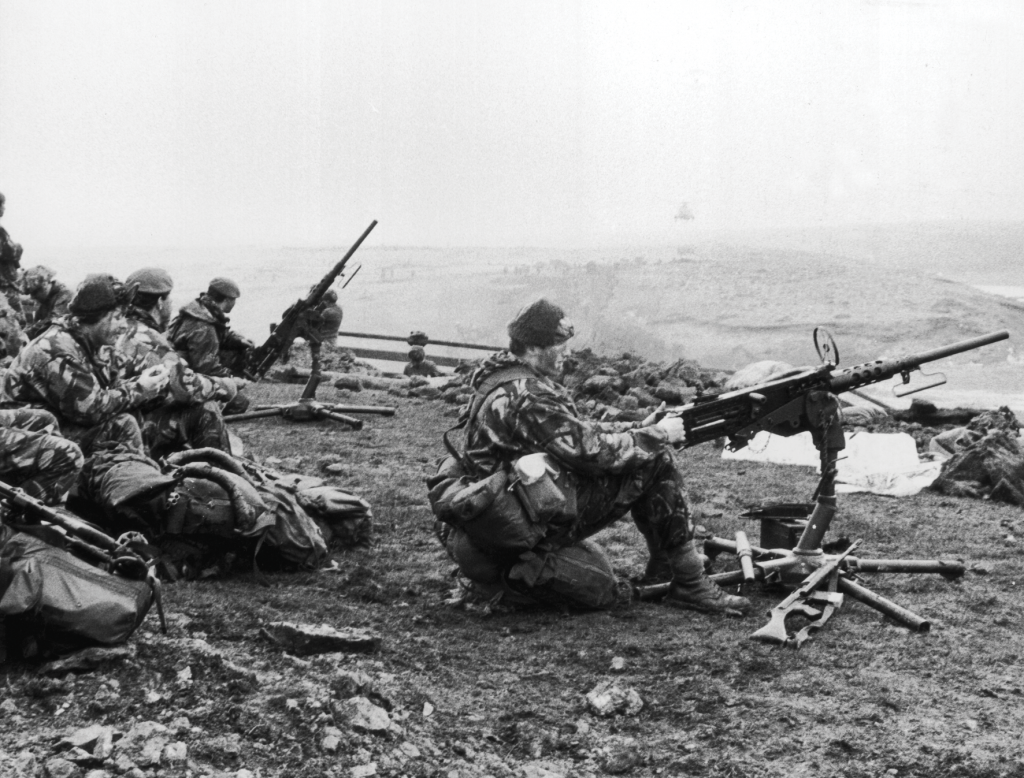By Paul O’Brien MA
As Ireland gears itself up for a decade of centenary events, across the water in Britain this year they have been remembering the 30th anniversary of the Falklands War, or as it is known to others, Guerra de las Malvinas. While many of us may remember this war taking place, few may remember what actually caused it or how Britain managed to regain control of a group of islands thousands of miles away in the South Atlantic.
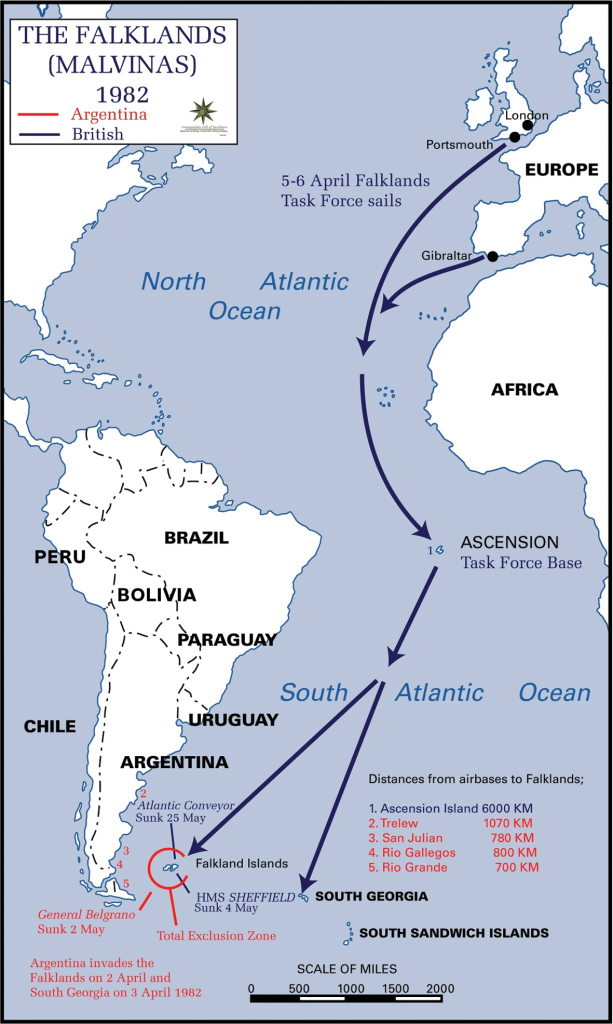
At 0430hrs on April 2nd, 1982, 150 men of the Buzo Tactico – Argentine special forces – landed by helicopter at Mullet Creek, a small inlet some three miles to the south-west of the Falklands’ capital, Port Stanley. This landing was part of an Argentine invasion of the Falklands and coincided with an earlier covert operation by Argentine special forces that had secured South Georgia and the South Sandwich Islands.
After a brief fire-fight, the island’s garrison of British Royal Marines surrendered and were taken prisoner along with 1,800 inhabitants. With the islands secured, a large Argentine amphibious landing followed comprising two brigades under Brig-Gen Mario Menendez. The Falklands War had commenced.
Located in the South Atlantic, the Falkland Islands lie approximately 500 miles (805km) east of southern Argentina. Port Stanley, the islands’ capital, is the most southerly capital in the world. The area consists of two main islands and two hundred small islets. While the two main towns are Port Stanley and Goose Green, the population of the Falklands is scattered throughout the many sheep stations dotted throughout the islands.
First sighted in the 16th century, the islands were subsequently colonized by Britain, France and Spain, with Britain retaining ownership since 1833. The question of British sovereignty has long been disputed by Argentina, who laid claim to the islands on the basis of previous Spanish occupation.
In 1982, after almost 150 years of British occupation, the ruling Argentine junta wanted to force Britain into conceding sovereignty over the islands. The Junta hoped to force the issue at sovereignty negotiations in New York, asserting that the Falkland Islands were Argentine territory since the 19th century and therefore should be returned. The occupation of the islands by Argentine forces was seen by many as a legitimate claim to their lands but the British government saw it as an invasion of a British dependent territory.
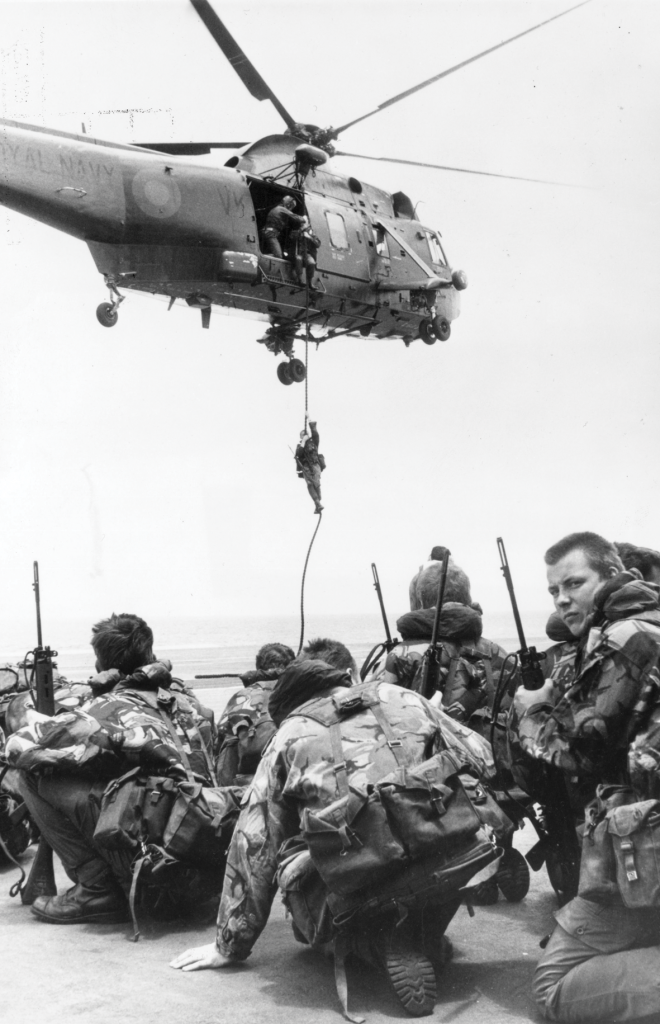
Britain was initially taken by surprise by the Argentine attack, despite a warning from Royal Navy commanders that a reduction in the presence of its forces in the South Atlantic would encourage an attack. The British prime minister, Margaret Thatcher, quickly decided to send a task force to the south Atlantic to retake the islands. As the British defence budget had been slashed and the British ministry of defence had no contingency plan for an invasion of the islands, this task force was rapidly assembled from whatever vessels were available.
The British military strategy devised was one born of necessity. Major General Jeremy Moore, who was appointed commander of operations, realised at an early stage that the retaking of the islands was going to be extremely difficult. The main constraint was the disparity in deployable air cover: while the British forces had the use of an aircraft carrier, HMS Hermes, the Argentines had the advantage of land-based airfields to launch attacks.
The first important military consideration was the isolation of the islands from the Argentine mainland by land and air. Using the Ascension Islands as a forward operating base, the British sent a lone Vulcan bomber to bomb the runway at Port Stanley. While the damage was minimal it demonstrated that the Royal Air Force could reach Argentine positions that were considered safe. While Argentine planes could launch from airfields on the mainland, they would only have enough fuel for a few minutes of attack time before they had to return to base to refuel.
Continuing their tactic of isolation, on April 12th Britain announced a maritime exclusion zone around the Falklands. Two British nuclear submarines were deployed to the area and on May 2nd the Argentine battleship, General Belgrano, was sunk with the loss of 360 lives. This action was a huge setback for the Argentine navy whose ships returned to port and did not participate in any further engagements. This action allowed the British task force to enter the South Atlantic unhindered and prepare for an assault on the islands.
After a combined force of British special forces and Royal Marines attacked and secured South Georgia,
Brigadier General Moore now planned an assault on the east island, identifying a landing area at Port San Carlos Water off the Falklands Sound. This area was chosen because it offered the best protection for the landing against any potential submarine threat and the surrounding hills made it difficult for strafing runs by Argentine aircraft. Though the British did not have air superiority they decided to go ahead with the plan.
On May 21st an amphibious landing took place and a beachhead established at San Carlos Bay, giving the British a foothold on the islands. Even though the approach was difficult, Argentine aircraft mounted repeated attacks on warships in the Falklands Sound, sinking HMS Ardent and HMS Antelope and damaging a number of other vessels. On May 25th HMS Coventry was also sunk. While the Argentine air force concentrated on the warships, they failed to stop the landing craft.
San Carlos Bay, located 50 miles from Port Stanley, was undefended as the Argentine command believed that any attack would take place closer to the capital. This indirect approach by the British reduced their potential for losses and enabled them to gain a firm foothold on the islands.
General Moore now turned his attention to attacking Argentine positions on the islands. He knew they would be well dug-in and his men would have to fight their way across the island to the towns of Goose Green and Port Stanley.
2 Para was detailed to take Goose Green and on May 28th-29th launched their assault against the town. This vicious battle left many dead on both sides, but the paras managed to secure their objective.
Moore then ordered 45 Commando and 3 Para to take up positions near Port Stanley. With many of their helicopters destroyed when the Atlantic Conveyor was sunk, the soldiers had to trek across East Falkland in sub-zero temperatures.
As elements of 5th Brigade were landing at Bluff Cove to support the attack on Stanley, they were attacked by Argentine aircraft and suffered severe casualties. However, even with this setback the bulk of British Forces were now in position near Stanley. However, Argentine forces had dug-in along a number of mountains surrounding the town and these would have to be removed before Moore’s forces could assault the capital.

On the night of June 11th-12th, 3 Para launched an attack and took Mount Longdon, 45 Commando took Two Sisters, and 42 Commando occupied Mount Harriet. On June 13th-14th the Scots Guards managed to take Tumbledown Mountain after a vicious battle, while 2 Para stormed Wireless Ridge. Much of the fighting was at close-quarters and casualties on both sides were high.
As the British pushed forward, supported by Harrier aircraft, the Argentine defence began to collapse. Argentine forces fell back into Port Stanley where Brig Gen Menendez surrendered his forces. The battle for the Falklands had come to an end.
The war cost the lives of 255 British servicemen and islanders and over 700 Argentineans. The Junta fell soon afterwards and the ensuing general election in Argentina was the country’s first free election in ten years.
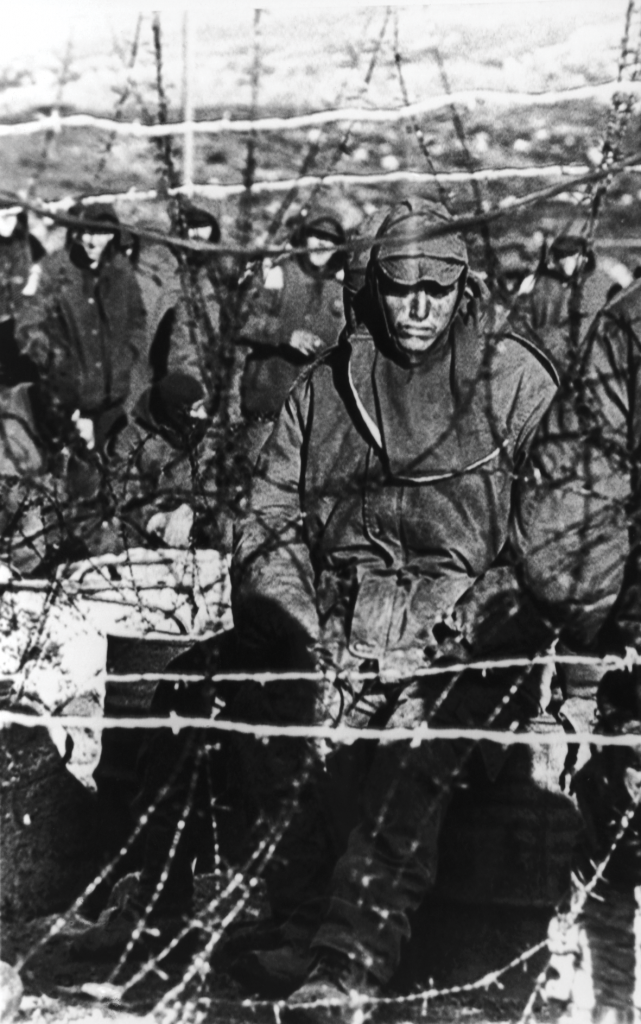
In seven weeks a British task force of 28,000 men and over 100 ships had been assembled and sailed 8,000 miles. It fought off combat aircraft that outnumbered its own by six to one. It put 10,000 men ashore on a hostile coast and fought several pitched battles against Argentine forces and had brought them to surrender within three-and-a-half weeks.
While the causes of the conflict and its outcome still remain controversial today, soldiers from both sides will this year be remembering not the battles that were won or lost but their fallen comrades.
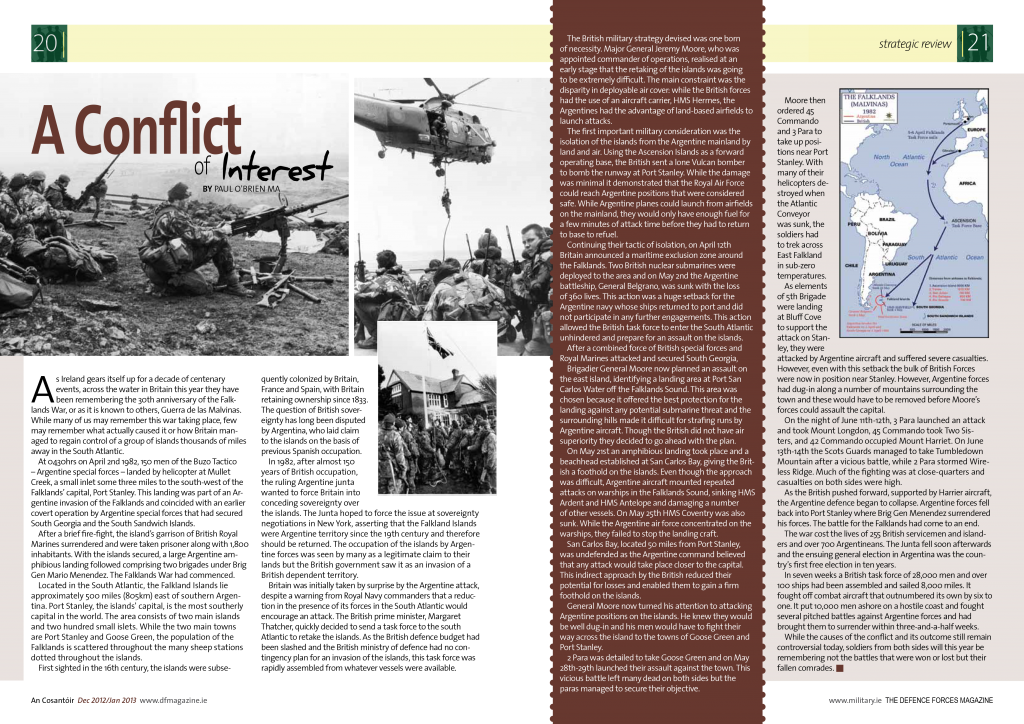
This article was published in the December 2012 / January 2013 issue of An Cosantóir: The Defence Forces Magazine. www.DFMagazine.ie

